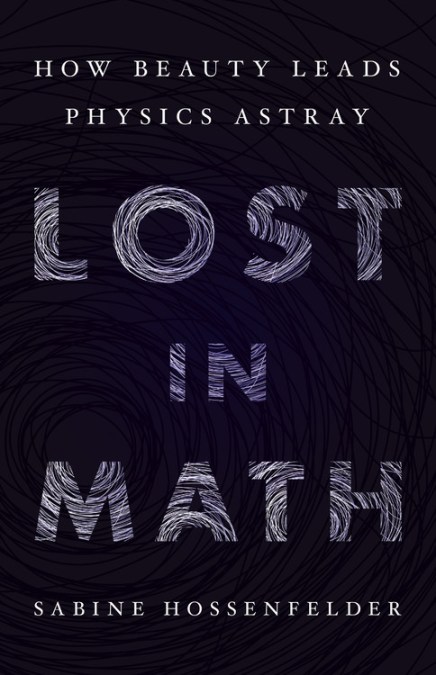 Modified gravity is a hypothesis (1983) that attempts to account for the gravitational pull that is otherwise attributed to dark matter (which has never been identified). From Sabine Hossenfelder, author of Lost in Math: How Beauty Leads Physics Astray, at :
Modified gravity is a hypothesis (1983) that attempts to account for the gravitational pull that is otherwise attributed to dark matter (which has never been identified). From Sabine Hossenfelder, author of Lost in Math: How Beauty Leads Physics Astray, at :
Which one is right? We still don’t know, though astrophysicists have been on the case since decades.
Ruling out modified gravity is hard because it was invented to fit observed correlations, and this achievement is difficult to improve on. The idea which Milgrom came up with in 1983 was a simple model called Modified Newtonian Dynamics (MOND). It does a good job fitting the rotation curves of hundreds of observed galaxies, and in contrast to particle dark matter this model requires only one parameter as input. That parameter is an acceleration scale which determines when the gravitational pull begins to be markedly different from that predicted by Einstein’s theory of General Relativity. Based on his model, Milgrom also made some predictions which held up so far.
But two recent papers re n direct conflict:
McGaugh et al conclude that the data contains evidence for a universal acceleration scale, which is strong support for modified gravity.
Then, a month ago, Nature Astronomy published a paper titled “Absence of a fundamental acceleration scale in galaxies“ by Rodrigues et al (arXiv-version here). The authors claim to have ruled out modified gravity with at least 5 σ, ie with high certainty.
Hossenfelder thinks both sides are making it easy for themselves:
Indeed, it would be an interesting exercise to quantify how well modified gravity does in this set of galaxies compared to particle dark matter with the same number of parameters. Chances are, you’d find that particle dark matter too is ruled out at 5 σ. It’s just that no one is dumb enough to make such a claim. When it comes to particle dark matter, astrophysicists will be quick to tell you galaxy dynamics involves loads of complicated astrophysics and it’s rather unrealistic that one parameter will account for the variety in any sample. More.
One suspects that modified gravity will be judged as a hypothesis largely on whether it can somehow be made to support a (multiverse) cosmology that nature seems not to recognize.
See also: Researcher: The search for dark matter has become a “quagmire of confirmation bias” So many research areas in science today are hitting hard barriers that it is reasonable to think that we are missing something.
and
The symmetrons needed to explain dark energy were not found Researchers: Although this is not the end of the theory, it does at least exclude the possibility of symmetrons existing across a broad range of parameters — and “dark energy” is going to have to be explained differently.